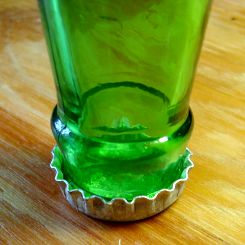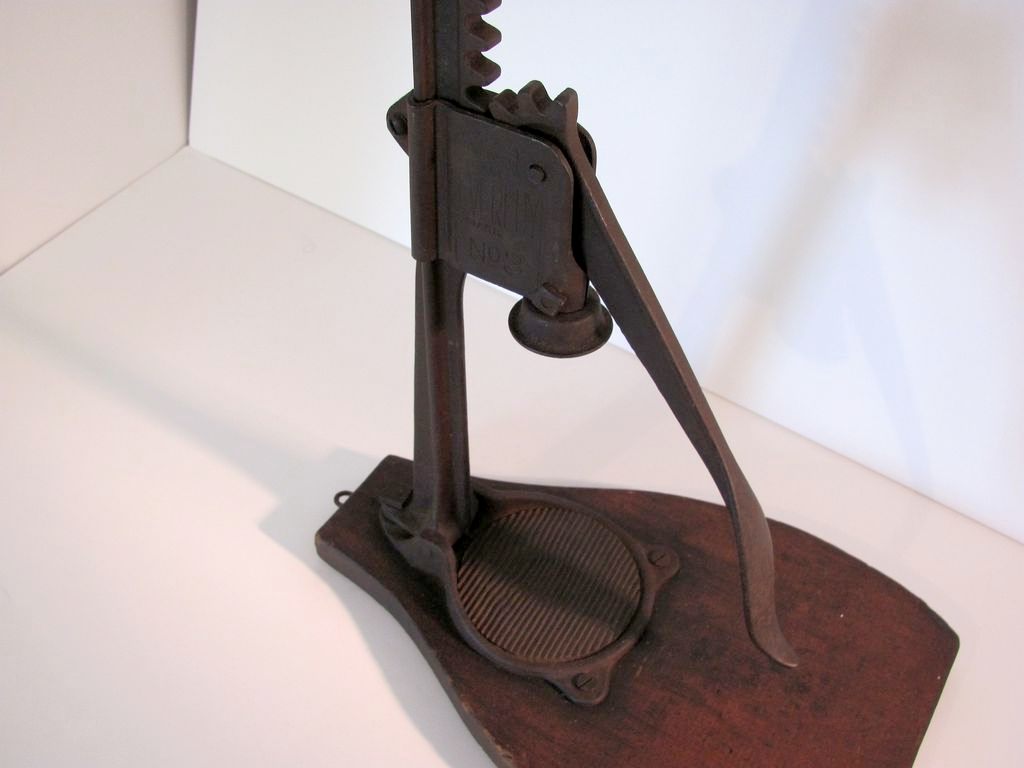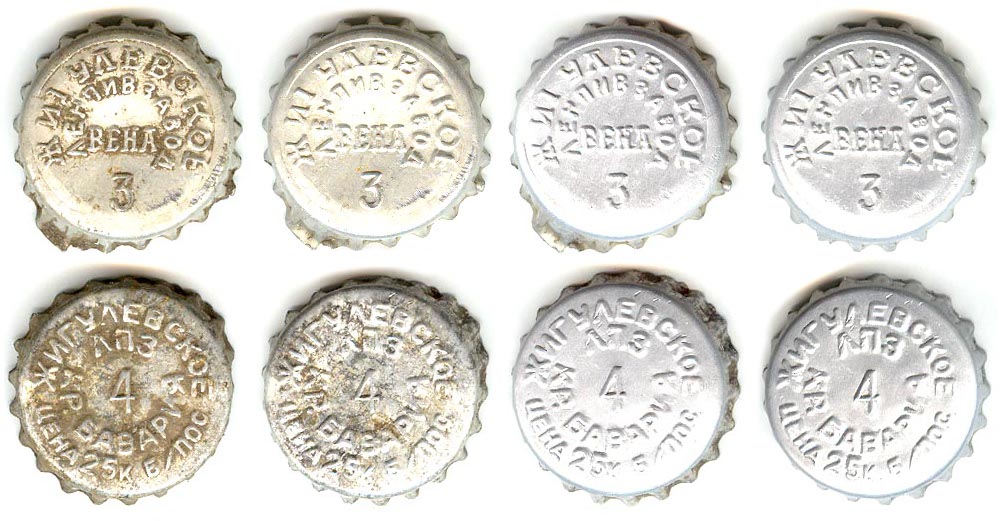Soviet caps must be handled differently than other (“normal”) caps. I will focus here on crown caps made from aluminum, which is of course softer than steel. That is why a thick plate was used to made a crown cap, to achieve more strength. I learned that it is not too difficult to bring such a cap back to excellent condition, but let’s not hurry...
The restoration process for such a "historical fossil" is more time-consuming than with other caps. This is to be expected, because most of these caps have been buried underground for many years. Sometimes I receive extremely muddy caps, which are hard to clean without special cleaners. First, we have to wash the front side of the cap until it is absolutely clean, without any oxide taints. This has to be done carefully, using a brush, scouring powder, and soap. Scouring powder makes the surface of the cap dim, and it looks nice.

Aluminum, being softer, also bends and distorts easily, which makes straightening them a necessity. I have a piece of plywood, which I use for making the cap’s surface level. I put the cap front side down and very carefully smooth out all the rough areas. (This work is really noisy. You could drive everyone in your home crazy, you know!) It's important to have a sufficiently soft plate for this operation (which is why wood is a good choice): most of these aluminum caps are embossed outside, and the last thing we want to do is damage the text. What I’ve described is a good way for making the front part of the cap really flat, but the rest (bent) area of the surface must be processed another way.

For this process, I use a beer bottle. I put the cap on the bottle, turn it upside down, and push it down against the plywood. This operation leaves the cap’s stamp on the surface of the plywood.

Then I correct side parts as necessary with my antique bottle capper. As a result of all these steps, do I have the cap in ideal form?

No, not yet ideal. I correct the side or flank of the cap one more time, with pliers. Then I clean the cap a final time with the brush and scouring powder. An old toothbrush is good for cleaning inside the cap.
Here you can see a couple of restored caps, "Before" and "After":

